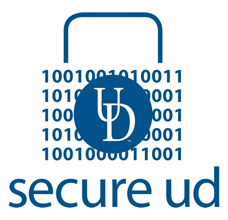
The University of Delaware has partnered with the US Department of Homeland Security (DHS) to test the security of UD's IT resources. As part of these tests, the DHS launched a simulated phishing attack against UD email accounts.
Recently, real phishing attacks on UD have begun using UD branding and terminology to trick UD employees into compromising the security of UD accounts, devices, and networks. This phishing test is designed to determine how vulnerable our users are to this prevalent and significant threat.
Remember, never click unverified links in emails. Also, no legitimate organization will ever ask you for your credentials or personal information through email.
If you encounter a suspicious email, report it to IT immediately.
Use the following links to get more information about phishing attacks and how to identify and avoid them.
No legitimate organization will send you email asking you to provide confidential information by just replying to the email or clicking a link.
Trustworthy: http://sites.udel.edu/threat Not trustworthy: http://sites.u-del.com/autho/udel/account.php
If you have questions about phishing, spear phishing, and other ways hackers use email, computers, and networks to try to steal your personal information, contact your unit's or college's IT staff or contact the IT Support Center.